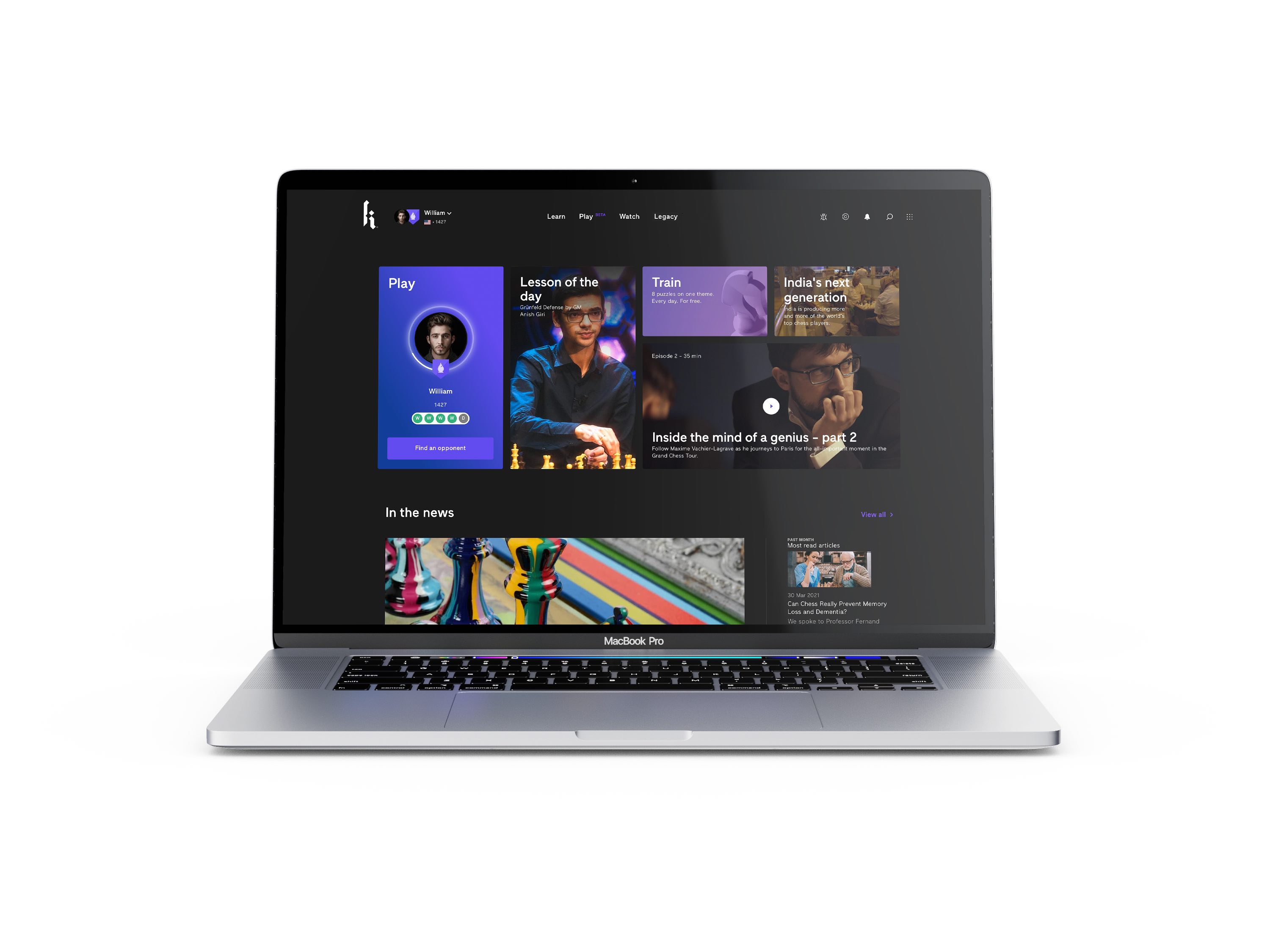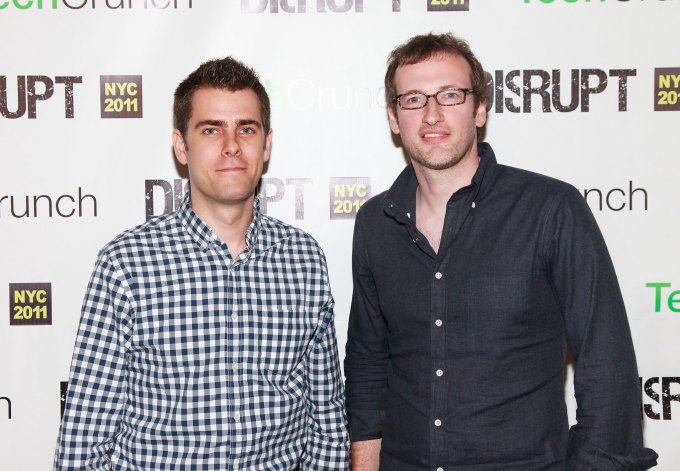For years now, a growing number of tech companies — large and small — have either relocated their headquarters to Austin or opened another office or campus in the Texas capital. They’ve been drawn to the city for a number of factors, including its laid-back lifestyle, no state tax, a business-friendly environment and lower cost of living (for now).
The impact on the city’s startup ecosystem is noticeable in the growing number of entrepreneurs (many of whom worked at some of the tech giants who have a big presence in the city) and investors calling Austin home.
Most recently, Tesla’s plans to build a gigafactory in the city and Oracle’s announcement that it was relocating its headquarters here have made national headlines.
The comparisons to the Bay Area abound — from the burgeoning and maturing startup scene to an overheated and competitive housing market.
All the while, venture capitalists see several key areas of opportunities. At one point, Austin was once a big enterprise software city. While software is still big here, a number of other sectors are growing including CPG (consumer packaged goods) and real estate tech, among others.
What follows is a survey of some of the top VCs in the city and their projections about the growth of Austin’s ecosystem.
Here’s who we spoke to:
- Eric Engineer, S3 Ventures
- Morgan Flager, Silverton Partners
- Joshua Baer, Capital Factory
- Carey Smith, Unorthodox Ventures
- Krishna Srinivasan, LiveOak Venture Partners
- Zaz Floreani, Next Coast Ventures
Where do you see Austin’s startup scene five years from now? The city has attracted a wide range of people over the years, including more big tech and startups very recently. How will it add up to something more than the sum of the parts?
Eric Engineer of S3 Ventures believes that by 2030, the Texas startup ecosystem could be the country’s second largest.
“Tech ecosystems benefit from virtuous cycles. As more talented people move to Texas, more capital will follow them, which will then attract more talent, and so on,” he said.
Morgan Flager of 16-year-old Silverton Partners says since Silverton’s inception more than 16 years ago, the state’s largest VC firm has always bet on Austin and, more broadly, on Texas.
“We’ve always felt that if Austin wins, we win, and that’s how we’ve run our business,” he says. “But we are just one organization, and now we are joined by many others who are also betting on Austin and want to do their part to make this ecosystem better…Moving forward, a critical component of success is fostering this existing philosophy of community collaboration, which has already played a part in making Austin such an attractive place to be. Austin is a place where people want to succeed by helping their community succeed, and they aren’t willing to sacrifice the former for the latter. If we continue to hold on to that core philosophy as we grow, we’re in for an amazing future.”
Joshua Baer of Capital Factory believes that in 5 years from now, Austin will have gone from “up and coming” to “arrived” and from the top of the Tier 2 cities to a competitive Tier 1 city. Two of the big signs of this, he predicted, will be a new cohort of Austin unicorns from the likes of Aceable, Apptronik, Disco, Eagle Eye, Everlywell, ICON, and Zen Business combined with big Series A funding rounds of the likes the city has not seen since the days when there was only one big VC firm in town called Austin Ventures.
Unorthodox Ventures Founding Contrarian Carey Smith hesitates to predict, noting that it’s hard enough just to characterize the scene as it is right now.
“There are so many companies of so many different sizes doing so many different things, and there isn’t really a unifying characteristic beyond growth and innovation. It really could go any direction,” he says.
LiveOak Ventures’ Srinivasa points out that Texas has tremendous number of Fortune 500 companies and, as a result, folks with deep domain in major industries such as energy, healthcare, real estate, hospitality and retail.
“This domain knowledge when cross-pollinated with the surging tech talent from big tech and startups has already had a multiplicative effect and is further accelerating entrepreneurial activity,” he said. Besides big tech talent and the continued maturation of the current startup ecosystem that is already underway, we will all continue to spawn an even greater number of incredible category leaders in the years to come. As such, we feel the Austin startup scene is poised to grow faster than ever before.”
Floreani of Next Coast Ventures projects that in five years, Austin will see signs of a maturity of the current market with potentially half a dozen unicorns and half a dozen startups finally going public.
Remote work is pushing and pulling the global workforce. This means that some offices will disappear from Austin, even with more companies moving in, but also more locals who work remotely for companies elsewhere. How do you see these factors impacting the city’s tech evolution?
Eric Engineer of S3 Ventures says that talented people are choosing Austin because of all it has to offer from a lifestyle perspective – not just the job. He believes remote work could ease some of Austin’s growing pains as workers will commute fewer days per week. That will give the city more time to develop the additional transportation infrastructure it needs to handle the continued growth, Engineer said.
Silverton Partners’ Flager thinks remote work shifts the playing field some because it allows workers more choice with respect to where they want to live versus where they have to live to get the job they want. And while it will give people more freedom and make certain things we do more efficient, he thinks most roles will require a hybrid solution where remote work is complemented by in-person interactions. “Thankfully, Austin has both — it is a desirable place to live and it has a rapidly growing tech community,” he said. “This is part of the reason we’re seeing such an influx of talent moving here at the moment.”
Joshua Baer believes that when people can work anywhere, they won’t actually work everywhere. He thinks there will be big winners that attract much more talent than other places, and that Austin will be one of the biggest winners in the tech migration of the next 5 years. “More companies will move their headquarters here, and more people will choose to work here for offices that have headquarters elsewhere,” he predicts.
Remote work doesn’t work for Unorthodox Ventures’ Carey Smith and he doesn’t believe it will work for Austin long-term. When he briefly worked from home at the start of the pandemic, he felt far less connected to the people I work with — and yet was even busier as remote work added “so much difficulty to even simple tasks.”
“I really thrive with face-to-face meetings and appreciate the hustle and bustle of the office. It keeps all of us motivated,” Smith said. “In short, it’s the lubricant that keeps my wheels turning, and I think it’s required to keep driving innovation in Austin.”
What industry sectors do you focus on within Austin (and beyond)? What is happening in Austin now that you’re most excited to fund?
Over the past 15 years, S3 Ventures has primarily investing in B2B software companies (two-thirds of its portfolio are in this space). But it has also had successful exits in consumer digital experiences and healthcare.
“Texas has an incredibly diverse economy, and so the technology innovation is also broad-based,” Engineer said. “We are seeing huge sectors of the economy (financial services, real estate, health care, education, skilled trades, hospitality, industrial, energy, manufacturing) that were slower to digitize, now start to embrace cloud-based solutions across their entire organizations.”
Silverton Partners has always been a generalist fund. That said, there are several dislocations occurring at the moment that are hard for the firm to ignore, according to Flager. Specifically, he said, there’s rapid disruption in digital health, fintech /insurtech, and education. “The playbooks in these massive industries are being rewritten and we are certainly looking for entrepreneurs who have a strong point of view relative to what the future will look like,” Flager added.
Capital Factory’s Joshua Baer believes the variety of the city’s startup scene is part of what makes it so vibrant. “If it’s hot in tech, it’s happening in Austin,” he said. Some of the areas that have been big recently include artificial intelligence and machine learning, consumer packaged goods, drones, e-commerce, healthcare, marketplaces, robotics and SaaS.
Unorthodox Ventures’ Carey Smith said his firm is focused on investing in companies making tangible products that solve real problems. And unlike many other VCs in the city, and even though it’s a big part of the culture in Austin, he’s not a fan of software. “I prefer the challenge of manufacturing consumer goods,” he said. “Beyond that, software companies lack diversity and only benefit a small sliver of society with the jobs they create. Manufacturing, on the other hand, helps everyone from GEDs to PhDs.”
LiveOak Venture Partners invests across pretty much all industries. In the past year, it has backed companies in proptech, fintech, retail, supply chain, business compliance, cyber security and edtech.
Proptech, in particular, is exciting to LiveOak, and the city has seen success in companies such as Opcity and OJO Labs. Another area with big potential are startups working in legal/compliance. Disco and Mitratech are large companies headquartered in Austin and there are exciting fast growing newcomers like Osano, Eventus and Litlingo.
For Next Coast’s Floreani, the increased number of successful B2C startups in Austin hitting scale is promising “as it cements our talent pool and secret sauce beyond Austin’s early days of being know as a semiconductor and SaaS town.”
“We still have great software entrepreneurs but we also have the DNA to do consumer and media if you consider EverlyWell, Literati, FloSports, Atmosphere, to name a few,” she said.
What are some of the local challenges you’ve encountered or seen founders struggle with? More generally, how should people looking to hire in, invest in, or relocate to Austin think about doing business in the city?
The general consensus among local investors is that Austin’s tech community is welcoming and collaborative and that they all went to serve as a resource to anyone thinking of moving to the city. S3 Ventures’ Engineer said his firm has had several recent transplants from both coasts share how they were pleasantly surprised by this culture – especially compared to what they were used to.
Silverton’s Flager acknowledges that moving is always a challenging event, but moving during COVID is certainly a class of its own.
“I’ve seen some founders struggle with finding strong community ties after relocating to Austin in the midst of a pandemic,” he said. “Almost everything is virtual and that makes integration with a new ecosystem more difficult. Part of my role as an investor and steward of the Austin ecosystem is to facilitate more connectivity within the founder community. As the vaccine rollouts continue and in-person contact becomes safer, Silverton is planning to host a series of community building events to better integrate founders moving here.”
Capitol Factory’s Baer believes Texas investors think about loss prevention more than their peers in Silicon Valley. His advice to companies? Develop two different pitches and know who you are pitching to. “The Texas pitch talks about how you have de-risked the business and the Silicon Valley pitch talks about how big this could be if it works,” he said.
For Unorthodox Ventures’ Smith advises founders to be careful of organizations in Austin or elsewhere that look to help entrepreneurs while “taking equity and not giving enough in return to justify it.”
“Founders need to make sure they are selective about the investors and advisers they take on and that they choose people who offer more than just capital,” he said.
LiveOak Ventures’ Srinivasa warns that people in Austin are not transactional and that if you come across as being transactional and strictly interact with somebody in a transactional way and not a relational way, “it rubs people the wrong way.”
“Outsiders need to be aware of this when they come here,” he said. “When making a hiring decision, it’s important to choose someone who is a good cultural fit, and not hire based solely on resume. From an investor perspective, if you want to do business here, it’s important to focus building strong relationships, besides offering attractive deal terms.”
Next Coast Ventures’ Floreani notes that hiring growth leaders has been a consistent challenge across her firm’s portfolio. “It would be great if Austin had a deeper bench of talented marketing and sales leaders,” she said.
Who are key startup people you see creating success locally, whether investors, founders or even other types of startup ecosystems roles like lawyers, designers, growth experts, etc. We’re trying to highlight the movers and shakers who outsiders might not know.
S3: Founders/CEOs – Leo Resig (Atmosphere), Jag Bath (Favor), Kim Rodriguez (Acessa), Doug Donovan (Interplay Learning), Richard Lebovitz (LeanDNA), Adelle Archer (Eterneva), Andy Ambrose (LiveOak Technology), Adam Berman (TVA Medical), Dion Cornett (Liquibase)
Investors – Rosa McCormick (Wild Basin), Oksana Malysheva (Sputnik), Adam Lipman (Ecliptic Capital), and Josh Baer / Bryan Chambers (Capital Factory)
Service Providers – Marc Nathan (E/N), John Gump (CBRE), Lathrop Smith (MLR), Austin Willis (SVB), Paul O’Brien (Mediatech)
Silverton: Heather Brunner and Jason Cohen @ WP Engine, Chuck Gordon and Mario Feghali @ Sparefoot, Jess Ewing @ Literati, Blake Garrett @Aceable, James Garvey @ Self Financial, Brian Cruver @ Alert Media, John Banczak and T.J. Clark @ TurnKey, Michelle Davey @ Wheel, Rob Taylor @ Convey and several others.
Capital Factory: http://baer.ly/austinabc
Unorthodox Ventures: Christa Freeland built ATX Kit, a startup that supports more than 40 local food entrepreneurs with her Austin-centric snack boxes.
Bob Bridge and the Southwest Angel Network (SWAN) support startups aiming to solve serious societal challenges, including environmental, health and social justice issues.
LiveOak: We are fortunate to have many movers and shakers here in our network. We do not wish to include one at the expense of another; that being said, we do want to recognize Dan Graham, who funds social impact startups through Notley Ventures, who has launched a fund to invest in women entrepreneurs, via the BEAM Angel Network and has played an active role in the emergence of CPG. Jim Breyer has been here for only a year and in that period has been an incredible advocate in op-eds, blog posts and interviews for Austin, the local startups and the energy of this town. That has been a big positive addition.
NextCoast Ventures: The founders of these startups have incredible growth plans for Austin: EverlyWell, Upequity, Steadily, Eterneva, Literati, FloSports, and Enboarder. Please note I may be a bit biased here as most of these are companies we have backed.
What do you think of comparisons to Silicon Valley? What impact do you think the influx of (big & small) tech companies is having on the city’s startup scene?
S3’s Engineer believes there is only one Silicon Valley, and that it is highly unlikely there will be anything comparable in the Western world.
But he thinks that while much smaller today, if the trends continue over the next ten years, the Texas ecosystem has a real shot at growing as large, if not larger, than New York and Boston.
Silverton’s Flager was born and raised in Silicon Valley. He went to school there and worked there as well. As a result, he’s not a big fan of the comparison.
“Each place is distinct with different pros and cons,” he said. “Will Austin ever overtake Silicon Valley in terms of size and activity? I really don’t know — we certainly have a long way to go. To some extent, I’m not sure that matters.”
What he does care about is that Austin retains its vibrant character and that its current growth enriches the city, rather than dilutes its energy. “It’s important to recognize that Austin’s culture has not been tech-centric,” Flager said. “Austin is a unique powerhouse of live music, great food, arts, outdoor living and ‘keeping it weird.’ ”
He adds: “As I contemplate what I admire about Silicon Valley and all the things Austin needs to do to be at that level, I tend to spend as much time thinking about what we could do differently.”
Unorthodox Ventures’ Smith believes it’s no surprise that “everyone wants to leave Silicon Valley.
“They finally figured out it’s a disaster,” he said. “As more intelligent, hardworking and curious people gather here, it’s a good thing for Austin and for VCs more broadly. One of the problems with Silicon Valley is that such a strong percentage of VC money stays there or in New York or Boston. We need more capital in Austin and other innovative cities throughout Middle America where we’re solving real problems for the everyday American. As Austin feels more and more influence from Silicon Valley, it’s so important to fund more than tech-oriented projects. Venture capitalists need to focus on basic human needs, too.”
LiveOak’s Srinivasa knows that comparisons to Silicon Valley are inevitable, and for the most part welcome when those comparisons bring broader national and international attention to Austin and reinforces its reputation as a city with a booming startup scene.
“There’s a lot of vibrancy and momentum to the startup scene here that is reminiscent of the early days of Silicon Valley — the growing number businesses being launched, the number of companies being funded, the amount of talent flowing here eager to engrain themselves in the tech community,” he said. “Yet we know there is something unique to Austin that sets it apart from any other tech hub—the collaborative spirit of the people here. There’s also an energy and excitement in this community that’s palpable. Austin has great respect for the successes Silicon Valley has brought forth, and we will incorporate their positive aspects, while forging our own path.”
Next Coast’s Floreani believes that comparison has been overused for a decade. “We are not Silicon Valley and will never be it,” she says. “I am not saying that in a negative sense. I grew up in the Bay Area. I simply believe we grow companies differently here and even though more SV talent and investors are coming to town I don’t think we will suddenly shift to a more Valley like approach to growing companies like blitz-scaling. Rather I think we will find a happy medium that incorporates fast growth and sustainability.”


from TechCrunch https://ift.tt/3t8Dzv4
via
IFTTT








